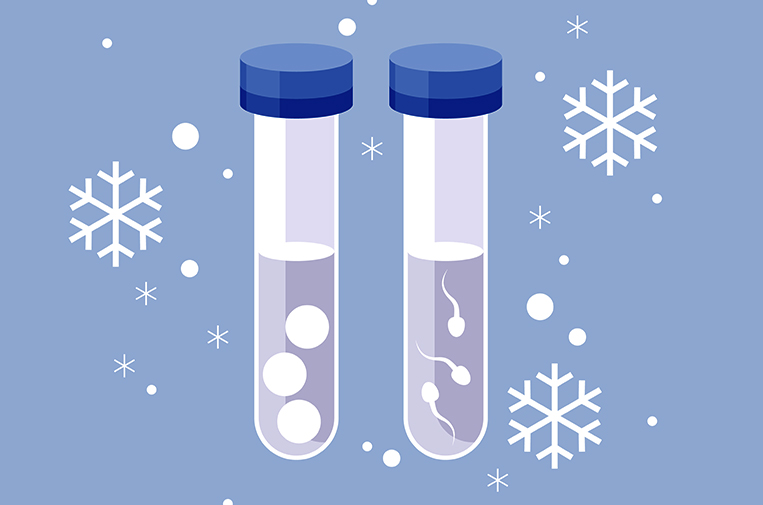Our numbers of frozen embryo transfers, which allow for preimplantation genetic testing, have greatly eclipsed fresh embryo transfers, but personal variables should drive the decision on these options.
I remember when embryo freezing was just beginning in IVF centers. The technology has come a long way, and in many centers (including our own) frozen embryo transfers (FETs) are more common than fresh IVF cycles. In fact in our center in 2018 only 10 percent of our IVF cycles had a fresh embryo transfer.
For a fresh IVF transfer to be successful, you need a good embryo, a good uterine lining, and good hormone levels. In an FET cycle, we can optimally prepare the uterine lining and hormone levels, and in many situations, this can increase the chance of pregnancy. Cycles that have preimplantation genetic testing (PGT) of embryos need to have a frozen embryo transfer in order to have time to get test results back on which embryos are genetically normal to transfer.
Is it still reasonable to do fresh IVF embryo transfers?
In our center we find that if a woman is under the age of 35, does not have too excessive a response to IVF medication, has a good uterine lining, and has progesterone hormones in the ideal range, live birth rates with fresh embryo transfers are higher than FETs. Live birth rates, which are a key metric in IVF success rates, are approximately equal to FETs if the embryo for the FET was genetically tested (PGT).
In women 35-37 years of age, live birth rates with fresh embryo transfers are higher than FETs if those frozen embryos were not genetically tested (PGT), but lower than FETs with PGT embryos.
In women, 38 years of age and older, fresh embryo transfers had a lower live birth rate than FETs with and without PGT. The highest success rates in this age group are in the patients doing FET cycles with PGT.
The benefits of genetic testing (PGT) with IVF
PGT is more important as a woman gets older since a higher percentage of eggs left in her ovaries are genetically abnormal as she ages. Older studies have suggested that PGT may be indicated in women 38 and older who do IVF. However, as PGT technology and IVF laboratories have gotten better, we are seeing that even younger women may benefit from PGT in an IVF cycle.
When we look at data in our center from 2012 to mid-2018, comparing live birth rates by age in FET cycles with and without PGT, we see a 9 percent higher live birth rate in women under 35 with PGT. That increases to a 20 percent increase in live birth rate in women 35-37 and 38-41. And an even greater 23 percent increase in women over 41.
So, which treatment will give you the best chance at success depending on your age and your clinical situation? We would be happy to sit down and talk with you about recommendations for your individual situation.






